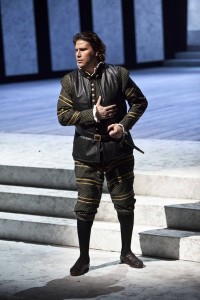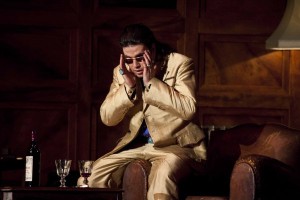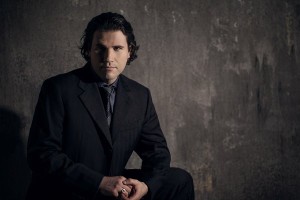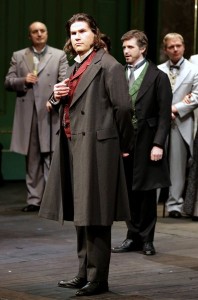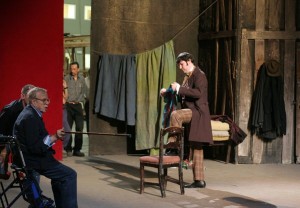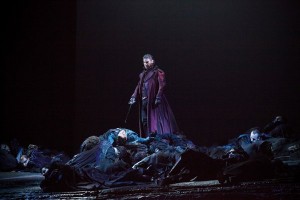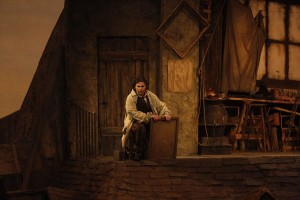Jon Vickers ist tot. Er starb am 11. Juli 2015 in seiner kanadischen Heimat. Vickers litt an Alzheimer. Seine Familie hat das nicht verschwiegen. Ich hole mir wieder seine Aufnahmen hervor. Dazu muss ich auf die Knie gehen. Denn Vickers steht ganz unten im Regal, weil sein Name mit V beginnt. Ich tue es gern, weil es mir eine angemessene Körperhaltung scheint, seinem Andenken zu huldigen. Seit langem denke ich immer über ein anderes Ordnungsprinzip nach. Jene Sänger, die mir wichtig sind, müssen endlich weiter nach oben, auf Augenhöhe. Jetzt wird mir wieder klar, wie sinnvoll das wäre. Einer wie Vickers gehört nicht ins Souterrain. Was also wieder hören? Siegmund, Tristan, Énée, Samson? Oder doch lieber den Messiah? Auch den Gerontios von Elgar habe ich mir lange nicht vorgenommen, die Winterreise ebenfalls nicht. Ich höre Schumanns Dichterliebe. In deutscher Sprache, mitgeschnitten bei einem Konzert 1967 in New York. Genau danach ist mir. Wieder staune ich, wie flexibel dieser Tenor mit seiner voluminösen Stimme umgehen konnte. Er nimmt sich ganz zurück, dreht die Stimme zu Flüstertönen herunter, macht sie so zart und zerbrechlich, dass aus Musik Farbe wird. Ist das nun Poesie oder Technik? Es wird wohl eine Mischung aus beidem sein. Zumindest ist dieses lyrische Vermögen bei Vickers umso erstaunlicher, weil der Sänger ja eher mit dem hochdramatischen Fach in Verbindung gebracht wird. Seine Ausbrüche ließen die größten Häuser erschüttern. Schumann ist davon weit entfernt. Er geht nach innen, nicht nach außen.
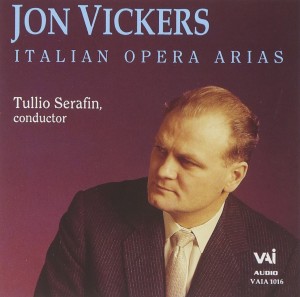
Diese ehemalige RCA-CD mit italienischen Arien, jetzt beim Label VAI, trug zum Ruhm des Sängers entscheidend bei.
Ich schätzte Vickers über die Maßen. Nicht sofort und auf Anhieb war das so – aber mit der Zeit immer stärker. Warum? Weil er seinen Rollen ein unverwechselbares Siegel einbrannte, sich nicht um Vorbilder scherte und immer aufs Ganze ging. Ich höre da einen unbeugsamen Willen, mit dem er sich in den Mittelpunkt jeder Aufnahme oder Aufführung zu singen versuchte. Das macht ihn nicht immer sympathisch. Seine Partnerinnen und Partner hatten es gewiss schwer, dagegen anzusingen, mit etwas Gleichwertigem aufzuwarten. Gleichwertig im Sinne von Ekstase, Individualität, Unverwechselbarkeit und eiserner Entschlossenheit. Schöngesang allein konnte ihn nicht ausstechen. Es mussten andere Kaliber sein. Vielleicht war ihm ja nur die Callas gewachsen. Sie soll ihn sehr geschätzt haben. Beide sind mehrfach gemeinsam in der italienischen Fassung von Cherubinis Medea aufgetreten. 1958 in Dallas, 1959 in London, 1961 an der Mailänder Scala. Davon sind Mitschnitte erhalten.
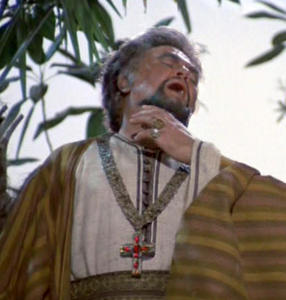
Otello ist von Desdemonas Untreue besessen – Screenshot aus dem Film von Herbert von Karajan.
Vickers stand damals am Anfang seiner internationalen Karrieren, die 1957 mit Gustavo in Verdis Ballo in maschera in Covent Garden begonnen hatte. Erst fünf Jahre später gelangte ein Mitschnitt ins Radio, der inzwischen auf CD in der Heritage Series des Royal Opera House herausgekommen ist. Vickers, den ich nur von seinen Aufnahmen kenne, sticht immer heraus. Ein Ton genügt. Noch bevor man zur Kenntnis genommen hat, wer noch mitsingt, Vickers ist schon da. Manchmal kommt es mir vor, als sei er zu egoistisch gewesen im Ensemble, habe auf seine Partner nicht genug Rücksicht genommen. Er ist mehr Solist und Einzelkämpfer denn jemand, der sich harmonisch in eine Szene einordnet, in der mehrere gleichzeitig singend zusammenwachsen. Selbst bei Duetten gibt es diese Neigung, sich selbstständig zu machen. In Wahrheit dürfte er nicht anders gekonnt haben. Seine Wucht der Interpretation ist raumverdrängend. In den dramatischen Steigerungen wie in der Zurücknahme. Es ist immer hundert Prozent Vickers. Nie weniger. Allenfalls mehr.

Otello mit Mirella Freni als Desdemona – für die Unitel-DG von Herbert von Karajan in Szene gesetzt.
Wenn ich an Vickers denke, denke ich an seinen Tristan, an die letzten Minuten des zweiten Aufzuges – wenn der ratlose Marke am Ende seiner berühmten Klage dem “geheimnisvollen Grund“, nachsinnt, warum Tristan ausgerechnet ihn verriet. Und jetzt kommt es: „O König, das kann ich dir nicht sagen / und was du frägst, das kannst du nie erfahren. / Wohin nun Tristan scheidet / willst du, Isold’, ihm folgen? / Es ist das dunkel / nächt’ge Land / daraus die Mutter mich entstand…“ Für mich muss es die EMI-Studioproduktion unter Herbert von Karajan von 1972 sein. Alle anderen Aufnahmen – es gibt an die zehn Mitschnitte – kommen da nicht heran. Sie allein schafft es, dass das Werk genau an der Stelle ins Transzendentale abhebt. Zumindest habe ich es immer so empfunden. Ich kenne und höre keine Isolde, die ihm gleichwertig gewesen ist. Birgit Nilsson war es allenfalls durch stimmliches Volumen, Kraft und Ausdauer. Beide waren gut aufeinander eingespielt. Ins Land, das Tristan meint, in dem der Sonne Licht nicht scheint, vermochte sie ihm nicht zu folgen. Von Helga Dernesch, Gwyneth Jones, Janis Martin, Berit Lindholm, Janice Yoes oder Roberta Knie ganz zu schweigen. Vickers bleibt stets einsam und auf sich gestellt. Ohne Zweifel wäre ihm vielleicht die Mödl in ihren besten Jahren als Isolde gewachsen gewesen. Was seine Anhänger schätzen an seinem Tristan, störte seine Kritiker, für die er zu brachial gewesen ist. Einen Weg dazwischen findet der englische Komponist Robin Holloway, den Jürgen Kesting in seinem Standardwerk über die großen Sänger zitiert: „Er ist absolut authentisch und auf extreme Weise schmerzlich – das Rasen eines verwundeten Tieres, was Melchior sein könnte, wäre er nicht so ununterdrückbar gutgelaunt.“ Es könne nicht den geringsten Zweifel geben am Rand dieser Tour de force, aber es bleibe ein Extrem – etwas Einzigartiges, als ob die Geschichte dieses eine Mal wahr wäre. Und nun der entscheidende Satz: „Ich kann keinen höheren Tribut zollen; aber ich möchte das nie wieder hören müssen.“ Das sitzt. In ihrer Zuspitzung ist das eine der treffendsten Äußerungen über Vickers, die ich kenne.
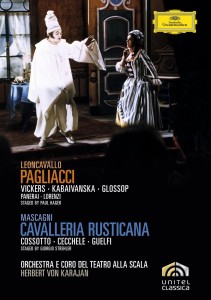
Das Foto oben ist ein Screenshot aus der „Pagliacci“-Verfilmung unter der Leitung von Karajan bei Unitel-DG
Selbst kam ich über Umwege zu Vickers. Er ist – so meine Erfahrung – nichts für junge Ohren. Nachdem ich mich an Windgassen und Melchior gewöhnt hatte, die doch immer auch so schön singen, brachte jener mein ganz persönliches Weltbild vom Wagnergesang ins Wanken. Er holte mich heraus aus dem Elfenbeinturm des Vorgefassten und eröffnete mir eine viel tiefer gehende Vorstellung künstlerischer Gestaltungsmöglichkeiten. Vickers verunsicherte mich. Er lehrte mich, dass Zuhören mitunter sehr unbequem sein kann. Ich fühle mich bei ihm immer genötigt, über das, was ich gerade gehört habe, nachzudenken oder mit Gleichgesinnten zu diskutieren. Das Letzte, was er mir vermittelte, ist Genuss. Ich finde ihn anstrengend. Er taugt nicht zur Projektionsfläche und ist kein gefundenes Fressen für Fanclubs.
Menschen, die Opern hören und sich mit Sängern gut auskennen, vergleichen gern. Sie wollen herausfinden, wer am besten ist. Dabei kommen ganz unterschiedliche Sachen heraus. Im dem Maße, wie solche Vergleiche Spaß machen, hinken sie. Manchmal kommt es mir so vor, als ob es gewisse Gemeinsamkeiten zwischen Vickers und Max Lorenz gibt. Sonst fiele mir niemand ein. Beide haben Tristan, Siegmund und Parsifal gesungen, auch Otello. Aus der Wiener Staatsoper hat sich von 1942 das so genannte Racheduett mit Lorenz und Mathieu Ahlersmeyer als Jago erhalten. Hinter dem Vorhang einer abenteuerlichen Akustik stürzt sich dieser Otello fast schon in selbstmörderischer Absicht hinunter in die Tiefen seiner Verzweiflung, und löst genau das aus, was Holloway über Vickers schreibt. Lorenz reißt so stark mit, dass man es fast nicht aushält und sich nur davor retten kann, dass man es nie wieder hört. Wie Lorenz ist Vickers der verletzte, der verwundete Held.
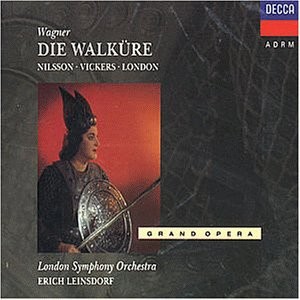
Der Siegmund in dieser DECCA-Studioproduktion der „Walküre“ gilt als eine der besten Leistungen von Vickers.
Vickers hat eine beachtliche Zahl von Tondokumenten hinterlassen, meistens Mitschnitte. Nicht alle sind ganz legal auf Tonträger gelangt. Mit sechzehn oder gar noch mehr Aufnahmen, ist der Siegmund in der Walküre Spitzenreiter. Meine Wahl fällt auf die Studioaufnahme der Decca unter Erich Leinsdorf von 1961. Das Pendent dazu ist der von Georg Solti geleitete Londoner Mitschnitt aus demselben Jahr, der erst kürzlich offizielle bei Testament herausgegeben wurde. Noch immer ist nachzuvollziehen, warum Vickers damals so aufhorchen hinterließ. Sein Porträt der Rolle, das so tief blicken lässt in die Seele eines Verfolgten, hat mit den Jahren nichts von seiner packenden Intensität verloren. Er verzichtet auf jedwedes Machogehabe. Beide Dokumente sind Vickers pur. Eine ganze Aufführungsserie von 1975 aus der Met ist darunter. Zweimal ist noch Birgit Nilsson die Sieglinde. Wagner vom Meter. Wer soll das alles hören? Wenngleich viele Sammlerherzen da höher schlagen. Gewiss. Aber macht es wirklich Sinn, wenn auch noch der so und so vielte Mitschnitt im heimischen Regal landet? Opern werden doch nicht aufgeführt, damit sich auch noch der hundertste Mitschnitt auf den Ramschtischen oder bei elektronischen Tauschbörsen wiederfindet.

Im Melodram „Enoch Arden“ von Richard Strauss, das bei VAI erschien, tritt Vickrs als Erzähler in Erscheinung.
Ich kann verstehen, wenn sich Sänger selbst nicht für ihre Aufnahmen interessieren und die Sammelei lieber ihren Fans überlassen. Mitschnitte dokumentieren in ihren Voyeurismus auch die Schwächen, Patzer, die Müdigkeit und den Überdruss, sich schon wieder ins selbe Kostüm zwängen zu müssen. Auch Vickers ist nicht einen Tag wie den anderen. Das macht ihn mir menschlich. Er kann an Grenzen kommen, zumal er ja auf diesen Tonbändern nicht zu sehen ist. Zuviel Vickers in schlechten Tagen ist der Verehrung abträglich. Ich kann ihn nur dosiert hören. Tristan und Isolde wurde schon erwähnt. Fidelio und Samson et Dalila sind auch mehrfach vorhanden, Aida und Carmen ebenfalls. Bei diesen Werken neige ich letztlich zu den Aufnahmen im Studio, weil sie die überbordende Wucht und Raubeinigkeit dieses Tenors besser integrieren und – wenn nötig – abmildern. Hole ich mir nach einer gewissen Abstinenz mal wieder den Pagliacci-Film Karajans hervor, rührt mich dieser Canio in seiner selbstzerstörerischen Verzweiflung zu Tränen. Mehr noch als der Otello, ebenfalls von Karajan opulent in Szene gesetzt – im Vergleich mit dem unverwüstlichen Leoncavallo-Dauerbenner aber deutlich konservativer. Die Troyens von Berlioz unter Colin Davis bei Philips möchte ich nicht missen. Den Peter Grimes von Britten auch nicht. Vickers hat mit dazu beigetragen, dass diese Werke ihren Platz auf den Spielplänen gefunden haben, obwohl Tenöre in seiner Nachfolge beide Figuren weiter verfeinerten. Von Vickers sind Impulse ausgegangen.
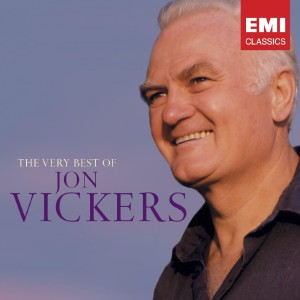
The best of: Die EMI hatte auf dieser CD Ausschnitte aus diversen Aufnahmen zusammen gestellt.
Jetzt, nach seinem Tod, dürfte noch manches hinzukommen. So lehrt es die Erfahrung. Vielleicht der Duca in Rigoletto, der Ferrando in der Cosi oder der Alfred in der Fledermaus? Diese Rollen hat er auch gesungen in seiner frühen kanadischen Zeit, als er noch Zweifel hatte, ob er es je zu etwas bringen würde als Sänger. Es ist nicht auszuschließen, dass sich Mitschnitte erhalten haben, zumal an den Produktionen auch der Rundfunk beteiligt war. In amerikanischen Sammlerkreisen soll sein Sergej in Schostakowitschs Lady Macbeth von Mzensk von 1964 aus San Francisco mit Marie Collier in der Titelrolle kursieren. Etwas mehr Vielseitigkeit könnte der Vickers-Rezeption nicht schaden. Mit dem Laca in Jenufa brach er 1974 an der Met aus dem Kanon der traditionellen schweren Heldenpartien aus. An diesem Haus landete er 1978 noch einen ganz unerwarteten Coup mit dem Wenzel in der Verkauften Braut (in Englisch). Bei seinem Erscheinen schüttet sich das Publikum aus vor Lachen. Es ist ein trügerischer Spaß. Sobald Vickers nämlich den Mund aufmacht, wird einem selbst in diesem rein akustischen Dokument klar, dass es gar nichts zu lachen gab. Rüdiger Winter
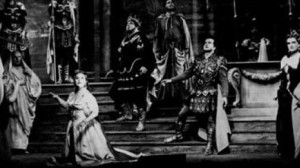


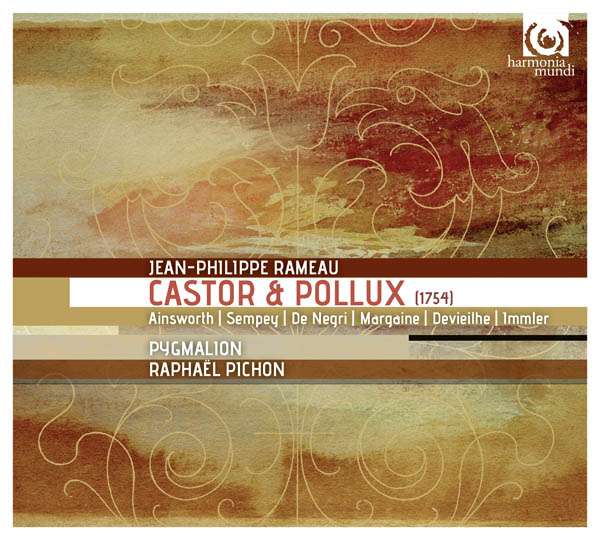

 Zu
Zu 

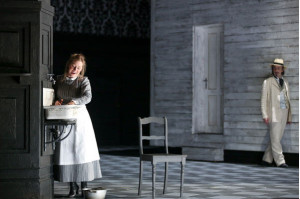
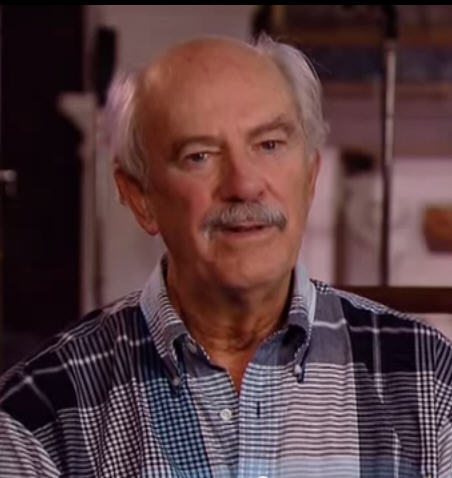









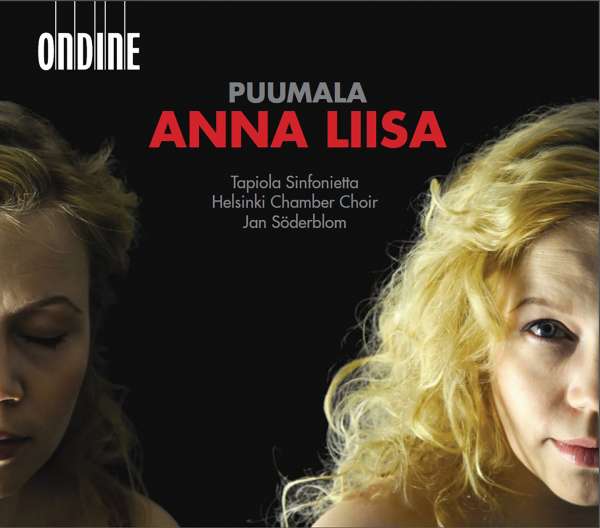



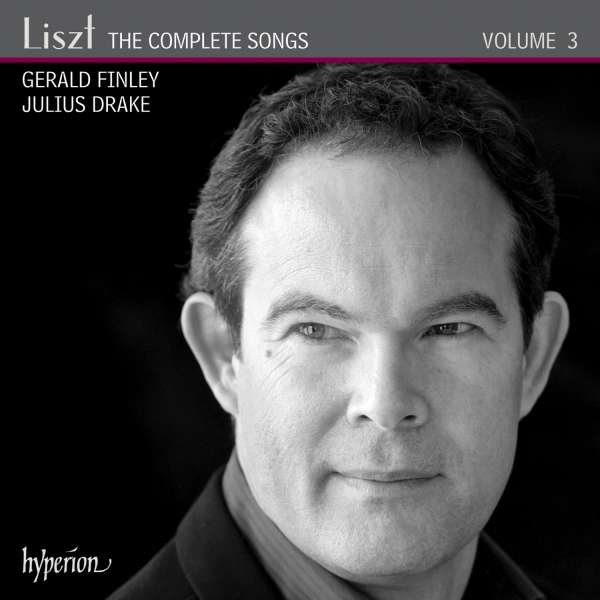
 Mit solch einer prominenten Fürsprecherin kann nichts mehr schief gehen. Brigitte Fassbaender stellt ihrer Fachkollegin ein vorzügliches Zeugnis aus: „
Mit solch einer prominenten Fürsprecherin kann nichts mehr schief gehen. Brigitte Fassbaender stellt ihrer Fachkollegin ein vorzügliches Zeugnis aus: „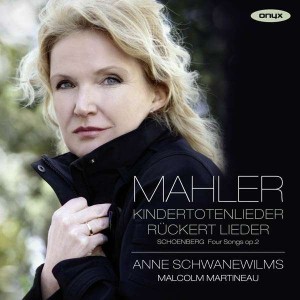 Schönbergs
Schönbergs  Wohin es auch führen kann, wenn Sängerinnen
Wohin es auch führen kann, wenn Sängerinnen 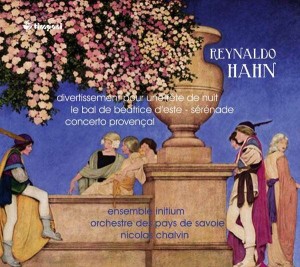 Zur Neutralisation zwischen so viel Gesungenem eignen sich vorzüglich einige
Zur Neutralisation zwischen so viel Gesungenem eignen sich vorzüglich einige
